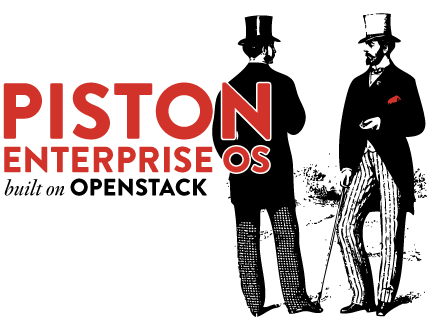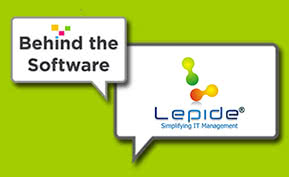IT Management
Powering the Future of IT with Piston Cloud

Piston Cloud is fast on its way to becoming a household name in cloud computing, delivering not only a powerful cloud operating system that can fit on a USB drive, but also participating in thought leadership and community events. CEO and co-founder Josh McKenty joined us for an in-depth discussion on their unique role as a liaison between the open source community responsible for OpenStack and the companies looking to deploy it.

WEBSITE: www.pistoncloud.com
FOUNDED: 2011
LOCATION: San Francisco, CA
SOLUTIONS: Piston Enterprise OS
The cloud market is very crowded, so what inspired you to start Piston Cloud?
For about two years, I ran a cloud project at NASA called NASA Nebula. I helped build software that ended up becoming OpenStack and ran a cloud environment that hosted applications for the White House and various NASA projects. After I left NASA, and after the OpenStack had become wildly more successful than I had expected, I launched Piston Cloud along with some colleagues from NASA and Rackspace. We wanted to commercialize OpenStack for enterprises to power their cloud environments, essentially bringing the technology we built for the government to businesses. I think there are a lot parallels there with Linux, which came out of a bedroom in Helsinki and then took over the modern data center.
I’m not really a NASA person. I’ve mostly done start-ups. Entrepreneurship is a recurring disease for me – I can’t help it. But aside from that, when you look at open source projects like OpenStack or Linux or Hadoop, the companies with staying power generally are those that have the original contributors involved. I worked on open source software for a number of years, and OpenStack is really different. It has the power to be a game changer in IT. Certainly, the cloud as a whole does too. The difference between start-ups that are exciting in the long term versus the short term is whether they’ve managed to solve a difficult, technical problem in an elegant and interesting way. And with OpenStack, we did that. We took the hardest problems in IT data centers and faced them head-on. OpenStack is not window dressing, a trend, or a Like button. That gave me a lot of confidence to start Piston Cloud: the market is hot, people get why this is important.
The Piston Enterprise OpenStack was launched in January ’12. The company itself was founded last year, but we needed some time to pull the right team together and raise a round of funding.
Continuing on from your success with OpenStack, how would you describe your mission with Piston Cloud?
We’re the red hat of OpenStack. We’re a commercial partner for organizations that want to use this powerful open source technology but don’t want to be responsible for security updates, compatibility with hardware, supporting the environment, and so on.
How has the response from the marketplace been so far?
Pretty tremendous. The market demand for OpenStack is enormous right now. The timing has been a bit challenging, because OpenStack was ahead of the curve when it first came out. We spoke with early adopters who told us they had OpenStack up and running but really wanted to switch to a supported distribution. Our sales cycles tend to be long. That’s a side effect of the hype around OpenStack. There are people who are eager to talk to us, but who aren’t ready to do anything yet. So we had to take on the role of becoming evangelists and supporters of OpenStack.
How do you do that exactly? Are you actively involved in the developer community through leadership, workshops, or events?
We do all of the above. I’ve been involved in forming the OpenStack Foundation. We host bi-weekly community meet-ups with beer and pizza to get users and developers together for one-on-one interaction that drives a project like this. And I do a lot of pavement pounding, both for OpenStack events and the scientific community.
In an open source community, you start out with everyone knowing everyone. Six months before founding Piston Cloud, I was deeply involved in keynoting and policy-making and sitting on technical committees and working in the trenches to bring new companies into the OpenStack fold. Obviously, it’s hard to know 3,300 people on a one-on-one basis, but I noticed that the media began to see me as the go-to resource to comment on developments in the OpenStack community. So it’s easy to stay top-of-mind that way. Piston Cloud also does a fair number of trade shows. We sponsor the Open Stack Summit twice a year, and we throw legendary parties. On the product side, we have formed partnerships that have helped us keep a high profile: Intel, VMware, major storage vendors, prominent hosting providers. We hear people in the community say, “If you’re working in OpenStack, you should really take a look at Piston Cloud.”
Is there an ideal customer or community that you target?
What’s ironic is that the scientific or research communities aren’t our customers. They’re OpenStack partners. They like to get their fingers dirty and tweak the code to make it do interesting things. Our customers tend to be banks and governments. They are in desperate need of the agility and efficiency of the cloud, but they can’t use someone else’s cloud, in part for security and regulatory reasons.
You mentioned sales cycles earlier. What do they look like at Piston Cloud?
Our best guess is that sales cycles are 12 months long. Right now, we’re only 5 months in. We have no trouble getting into early discussions, but those are followed by a long requirements gathering phase where we want to make sure we’re delivering something that fits their needs. Typically, there’s an early, pre-contract phase where we just need to get NDAs and Master Service Agreements in place. Then there’s the vendor evaluation, followed by 90-day POCs and pilots. By the time we’re done, there are typically 10 to 15 stakeholders involved because these are major decisions that need the approval of the enterprise architecture organization. We impact how they will be using IT from now on.
Do you currently have any active customers?
Radio Free Asia is a production deployment in 6 countries. We have a small number of production customers and a much larger group of POCs and pilots.
How is Piston Cloud set up? What does your team look like?
We have about 20 people right now. The nice thing about working in an open source project like Open Stack is that I have 3,300 people working for free, or on other people’s payrolls. Our internal development team consists of seven or eight people. We have another four people in customer care and support. The sales organization is really lean – it’s just two guys – and then we have some people in Marketing. The 185+ companies in the OpenStack eco-system all partner and collaborate with each other, but most of them also compete with each other, so we’re working hand-in-hand with the people we compete with.
Can you comment on the aesthetic of the company: the old-timey look and feel of the website, the Wild West theme?
That comes out of the name of the company. Back at NASA, we were working on the cloud and SaaS years before it was cool. By the time I switched to OpenStack, I was sick and tired of hearing people say, “The cloud is nothing but hot air.” What do you do with hot air? You put a steam engine around it. You put a piston on top of it. Then you capture that force and turn it into work. So a piston is how you get power out of a cloud.
Steam engines remind us of the Industrial Revolution, a time when automation and mechanization changed everything about industry in the entire world. Right now, we’re going through that same transition with the cloud, which is changing business completely. We wanted to reflect on the timeliness of steam power and the steampunk ethos as being the design aesthetic behind our business.
Also, as it turned out, our founders all liked fancy clothes, so that became a hallmark of our company culture. We have Fancy Fridays instead of Casual Fridays, because if you try’d to look any more casual in Silicon Valley, you’d end up not wearing any clothes at all.
Where do you think your segment is headed? Where do you see it in five years?
I sound less crazy every day when I say that five years from now, all IT will be in the cloud or on a mobile device. When TVs first came out, the idea that one day everyone would have one was ridiculous because they were so expensive. Now we don’t just have a TV in every home, but in every room. We even have TVs in people’s pockets. The same goes for computers. We have iPhones and iPads and laptops, and some of us still have desktop computers at work. That begs the question: where does all that information reside? The amount of data per person is going up at such a fast pace that we need more data center capacity than ever before. What this will look like in five years is a perfect harmony between cloud and mobile.
To answer where that puts Piston Cloud, I would first have to say where I think OpenStack will be. OpenStack is a framework for building operating systems of clouds – it’s the cloud kernel. Piston Enterprise OpenStack is one of those cloud operating systems that will power the future of IT. As a business, that means that we will buy IBM in five years, or a Hawaiian island so we can live next to Larry Ellison.
What challenges do you see, and how can businesses overcome them?
Hybrid cloud nirvana is where we seamlessly move workloads and data from private clouds to public clouds and back. But everything that’s broken about the internet is in the way of that, mainly authentication and identification. We never got Single Sign On to work. The closest we ever got was Facebook Connect, but in order to use it, you have to give up all notions of privacy. Businesses aren’t going that route. We also have to fix true IP address portability. I sat on a panel once with Vint Cerf, one of the inventors of the internet, and he lamented everything that had gone wrong in defining IP. The IP address was supposed to identify what something is and where it is, but computers don’t stay still anymore. You have your phone in your pocket and your laptop in your bag, and virtual servers get moved around constantly. It’s an understandable mistake to have made at the time, when no one thought computers would ever become portable. But it’s certainly a problem now. How do we solve real workload portability? The real bottleneck underlying all this, however, is the speed of life. The more data we have, the more processing we want to do on that data, the harder it is the move that data. The speed of life is a constant, so we have to get more clever about processing this data.
People compare the cloud to a utility, but the cloud is not a power grid – it’s more like a water grid. You’re never going to have a national water grid, but you have municipal water systems for cities and small villages, and you have wells. Big industrial complexes have their own wells, or maybe they have water coming in from different reservoirs. Is it likely that one day we will have a nuclear power plant in every home? No. But we’re also not going to have one for the whole country.
You mentioned you’re a start-up guy and that you’ve had a hand in different projects, so what makes you particularly excited about Piston Cloud?
Between leaving NASA and starting Piston Cloud, I took a six-month sabbatical. I went to Europe and ran a project for the World Bank called the Global Earthquake Model. It was an open source project to improve modeling of earthquakes. It turned out that projects like that need software like OpenStack. I’ve worked on cool projects like Netscape and boring projects like OpenStack, and I’m especially good at the boring stuff. I wouldn’t have built Facebook – it’s cooler than I am. But I can build something that will help create the next Facebook or the next space station or the cure for cancer. All the things I really care about as far as social issues – discovering new drugs, dealing with catastrophic disasters – need giant federated clouds. That is my contribution: building boring plumbing to add something cool on top. I got to work at NASA, and that’s a crazy thing. I’m not an astronaut and never will be. But I can still do something that helps, and that has to be cool enough.
Who are the most interesting people or companies in your market right now?
Derek Collison, who was the CTO at VMware, is the architect of Cloud Foundry, an open-source Platform-as-a-Service. It’s ironic that he came from VMware, which is not known for its contributions to open source. Also Inktank, the makers of the Ceph file system. They launched earlier this year, although their technology has been around for five years. They were spun out of DreamHost. These might not be the cool people you want to hear about, but the way in which they allow others to change the game is really powerful. I feel bad calling out anyone from the OpenStack community, because they are all rock stars. But the person who does the most work and gets the least credit is Jesse Andrews of Rackspace.










